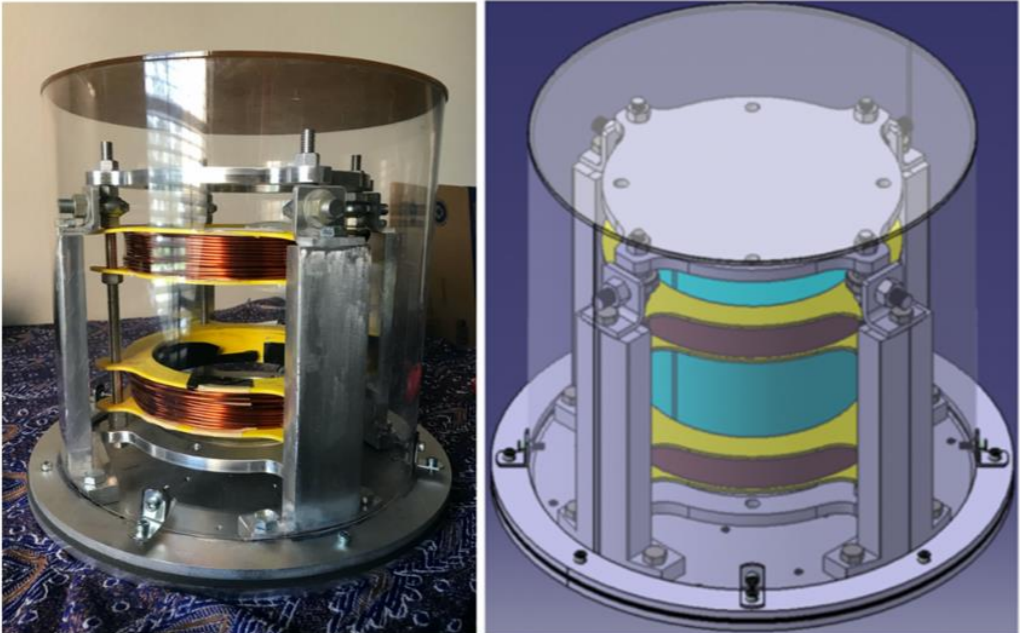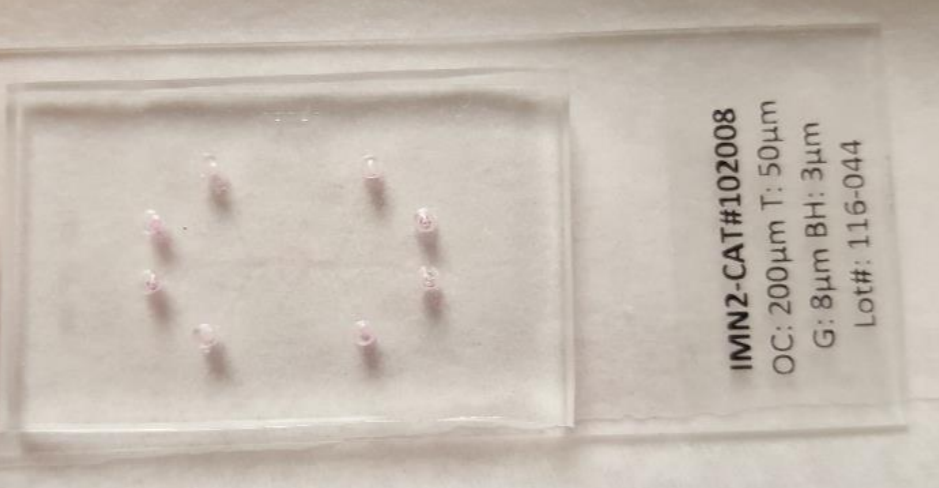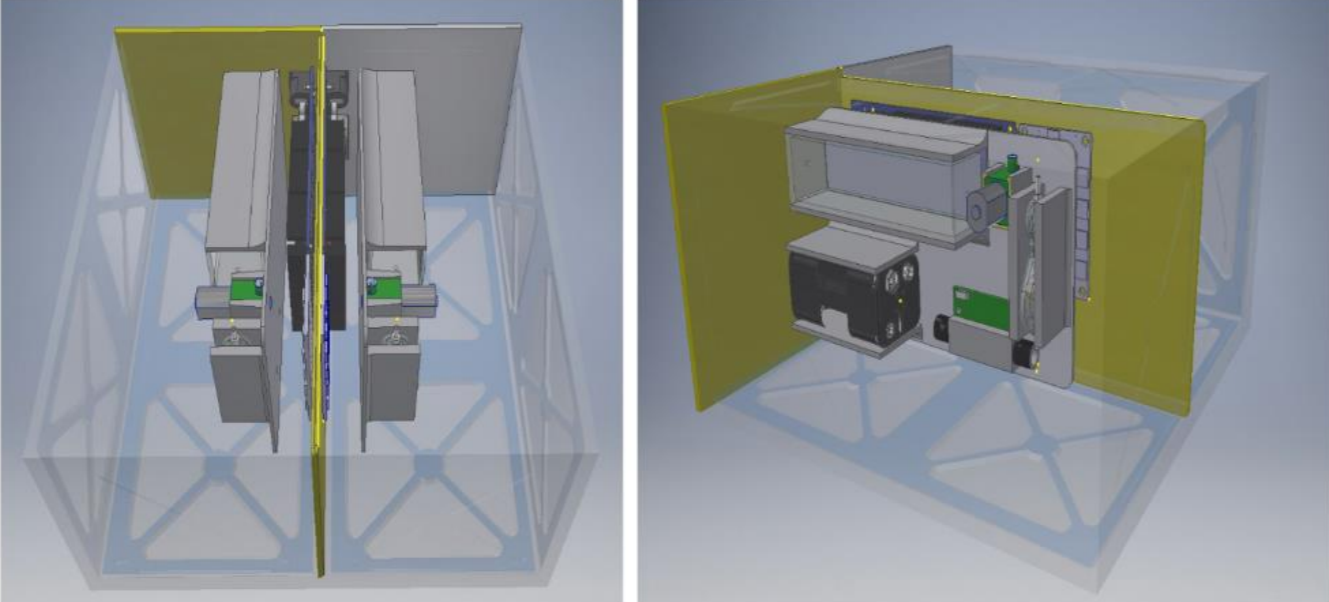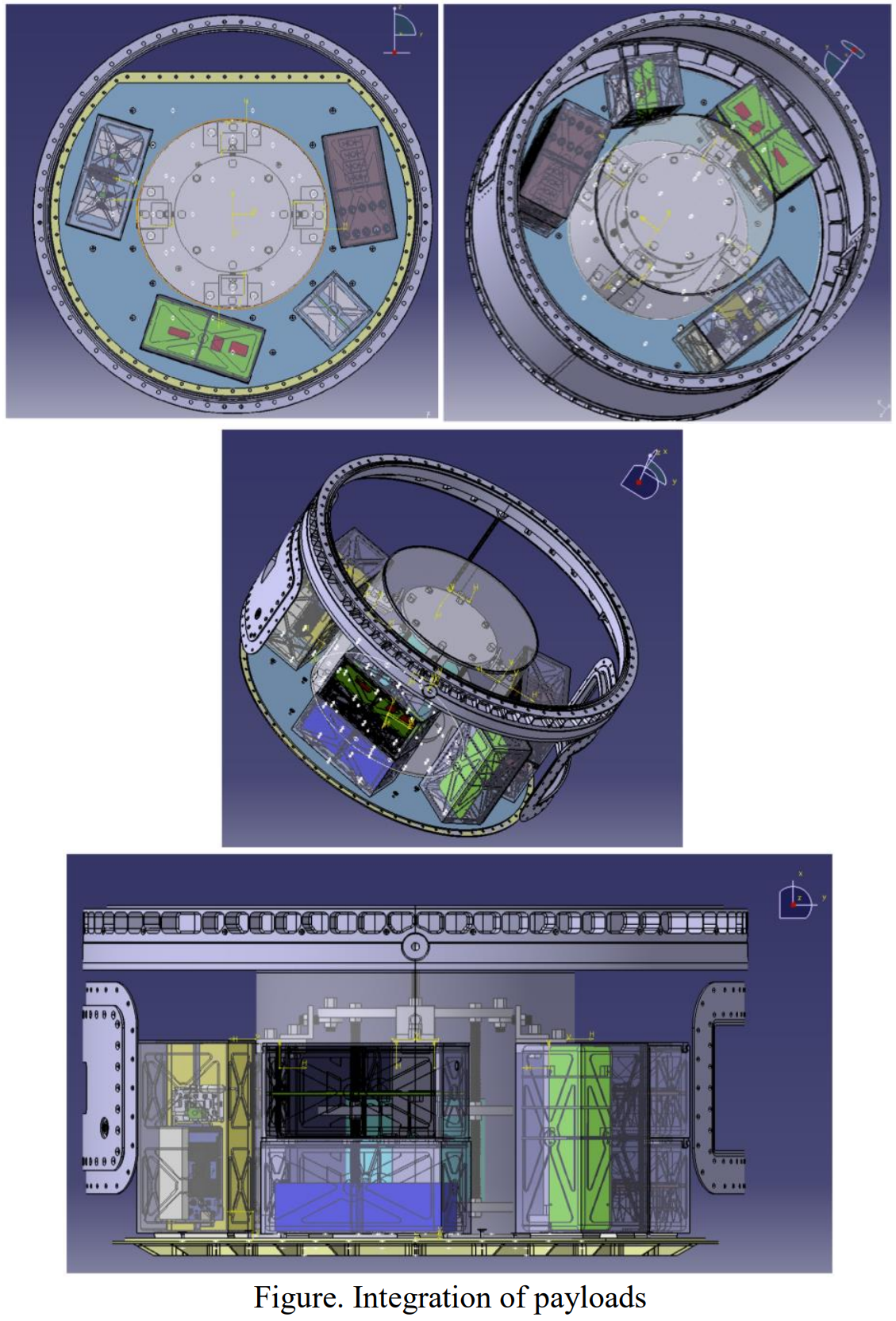81-90 of 189 results
-
Meta-Analyses of the Effects of Standardized Handoff Protocols on Patient, Provider, and Organizational Outcomes
PI Joseph Keebler
CO-I Elizabeth Lazzara

This meta-analysis attempts to understand the benefits of a structured communication process on patient, provider, and organizational outcomes. Studies have found that one of the most crucial points during a patient’s hospital stay is the transition of care between one or more providers, often referred to as a patient handoff. These brief interactions between providers are often especially vulnerable to communication breakdowns due to interruptions, omission of pertinent information by the sender or receiver of the information. To illustrate, upwards of 80% of severe, preventable medical errors have been attributed to miscommunication during handoffs. In other words, failures in communication during handoff are potentially responsible for the loss of hundreds of thousands of lives every year in the United States.
Standardized protocols – usually in the form of a short mnemonic (e.g. SBAR – situation, background, assessment, recommendation) or a longer multi-item checklist - have been required by the Joint Commission, but meta-analytic integration of handoff protocol research has not been conducted. Meta-analysis is a statistical technique that quantitatively assesses effects across multiple studies, providing a summary of the current state of the science. The overall purpose of this study was to understand the effects of handoff protocols using meta-analytic approaches. Handoff information passed during transitions of care, patient outcomes, provider outcomes, and organizational outcomes are the primary outcomes studied for this research.
Initially 4,556 articles were identified across a multitude of literature databases, with 4,520 removed. This process left a final set of 36 articles, all which included pre-/postintervention designs implemented in live clinical/hospital settings. Meta-analyses were conducted on 34,527 pre- and 30,072 postintervention data points.
Results indicate positive effects on all four outcomes: handoff information, patient outcomes, provider outcomes, and organizational outcomes. We found protocols to be effective, but there is significant publication bias and heterogeneity in the literature. Publication bias indicates that only studies with significant findings are being published, while heterogeneity indicates that studies are not being conducted the same way – usually lacking standardized metrics. These results demonstrate that handoff protocols tend to improve results on multiple levels, including handoff information passed and patient, provider, and organizational outcomes. Significant effects were found for protocols across provider types, regardless of expertise or area of clinical focus. It also appears that more thorough protocols lead to more information being passed, especially when those protocols consist of 12 or more items. This research has continued to this day, with a recent dissertation (Kristen Welsh-Webster) completed i in 2017 on implementation of handoffs in a live anesthesia unit. Keebler and Lazzara’s team are currently writing multiple grants in collaboration with local and national hospital systems to improve their handoffs and team processes surrounding care transitions.
Categories: Faculty-Staff
-
Integrated Structural Health Sensors for Inflatable Space Habitats
PI Dae Won Kim
PI Sirish Namilae
Under this research project we will develop an innovative structural health monitoring system for inflatable space habitat structures by integrating nanocomposite piezoresistive sensors
Inflatable structures for space habitats are highly prone to damage caused by micrometeoroid and orbital debris impacts. Although the structures are effectively shielded against these impacts through multiple layers of impact resistant materials, there is a necessity for a health monitoring system to monitor the structural integrity and damage state within the structures. Assessment of damage is critical for the safety of personnel in the habitat, as well as predicting the repair needs and the remaining useful life of the habitat. We are developing a unique impact detection and health monitoring system based on hybrid nanocomposite sensors composed of carbon nanotube sheet and coarse graphene platelets. An array of these sensors sandwiched between soft good layers in a space habitat can act as a damage detection layer for inflatable structures. We will further develop algorithms to determine the event of impact, its severity, and location on the sensing layer for active health monitoring. Our sensor system will be tested in the hypervelocity impact testing facility at UDRI in future.Categories: Faculty-Staff
-
In Service Performance of Pipe to Structure Connections
PI Payal Kotecha
Dr. Kotecha was awarded a research grant for $200,000 from the Florida Department of Transportation to investigate pipe-to-structure connections.
This two-years project will investigate the performance of installed resilient connectors and typical brick and mortar connections. This will include field inspections and documentation within District 7 for resilient connectors. Additional investigations will also be conducted in other locations for structures with brick-and-mortar connections. These results will further evaluate the potential of statewide deployment of resilient connectors.Categories: Faculty-Staff
-
Understanding Factors that Influence Anesthesia Handoffs
PI Elizabeth Lazzara
CO-I Joseph Keebler
Communication is an essential aspect of quality patient care in modern medicine, yet mishaps in communication during handoffs (i.e., the transition of a patient between two or more providers) happen frequently. The purpose of this project was to understand the factors that influence handoffs between anesthesia providers and clinicians within the post anesthesia care unit.
Handoffs are ubiquitous in hospital settings and frequently occur before and after surgery (i.e. the perioperative setting). Because patient care in the perioperative setting is contingent upon communication between providers, it is important the handoff between surgical and post-surgical units occurs efficiently and efficaciously to ensure relevant patient information is being transferred. To ameliorate errors associated with handoffs, there is a national call for standardization (i.e., protocols). Although there has been progress in this domain, handoff research remains problematic. Protocols are often developed unscientifically, research methods lack rigor, and studies rarely compare protocols against one another. Additionally, many studies do not focus on contextual variables (e.g., noise or turn taking) or individual differences that could influence handoff efficiency.
To address this gap, this study utilized qualitative and quantitative methods to develop an innovative, customized, data-driven handoff protocol, implemented the protocol into a live perioperative setting, and evaluated it in comparison to the previously established handoff protocol, SBAR (Situation, Background, Assessment, and Recommendation).
We designed the handoff protocol using literature from the medical field, interviews, and a card sorting technique (a method to determine how experts organize their knowledge). Based on this data, we generated a protocol (i.e., Flex 12) and corresponding learning/training materials. We trained participants on Flex 12 using information- and practice-based strategies as well as feedback. More specifically, participants listened to a lecture on handoffs, had the opportunity to perform handoffs, and received feedback regarding their performance of those handoffs. To determine its effectiveness, the Flex 12 was tested using a pre-post within-subjects design, which means that all participants were measured before and after the Flex 12 was implemented.
Although handoff protocol was not significant with regards to handoff efficiency, noise and turn taking was significant. In other words, handoffs were less efficient when there was more noise from equipment or staff and when providers had more turns during their conversation. Finally, the use of the protocol impacted provider’s attitudes and cognitions. For example, providers perceived less authority between one another when the protocol was used.
Despite being a small study at one site, it does present evidence that other contextual factors should be considered to better understand handoffs. Factors, such as noise and turn-taking, do influence handoff outcomes (i.e., handoff efficiency). Considering the time demands placed on healthcare providers, it is critical to understand and maximize efficiency while maintaining safety.
Categories: Faculty-Staff
-
Vertical Lift Research Center of Excellence (VLRCOE)
PI John Leishman
CO-I Ebenezer Gnanamanickam
CO-I Kaijus Henri Palm
CO-I Guillermo Mazzilli
Ship airwakes are the unsteady turbulent flows that are generated by the earths atmospheric boundary layer (the wind colloquially) blowing over a ship. These flow fields are highly turbulent, not easy to predict and couple with a similar wake flow field generated by a rotorcraft operating close the the ship. This coupling as expected is extremely difficult to predict let along faithfully simulate in a flight simulator. This coupling can have catastrophic consequences for the operation or rotorcraft operating in the vicinity of Naval ships.
Ship airwakes are the unsteady turbulent flows that are generated by the earths atmospheric boundary layer (the wind colloquially) blowing over a ship. These flow fields are highly turbulent, not easy to predict and couple with a similar wake flow field generated by a rotorcraft operating close the the ship. This coupling as expected is extremely difficult to predict let along faithfully simulate in a flight simulator. This coupling can have catastrophic consequences for the operation or rotorcraft operating in the vicinity of Naval ships.
While ship airwakes have now been studied for several decades, there remain many unanswered questions and associated challenges in understanding these unsteady, three-dimensional flows, particularly concerning their turbulence characteristics and how flow scales in the airwake can potentially couple with those of a rotorcraft, including Unoccupied Aerial Systems (UAS). Navy personnel and aircraft safety remain the primary motivating factor for understanding the airwake and the interactions so produced. In this regard, developing a versatile, high-fidelity mathematical model to represent the ship airwake in a flight simulation, such as using a reduced-order mathematical representation, remains a priority for the technical community. This goal is particularly critical for more contemporary ship shapes typical of the current Navy inventory. It is toward this end that the fluid dynamic studies of the airwake are addressed in this proposed task. Furthermore, a vast majority of ship airwake measurements have not considered the interactions between an operating rotor(craft) and the airwake, another challenge the proposed task will address.
Overall, the mean flow features of the ship airwake are currently reasonably well characterized, at least for simplified ship superstructures such as the SFS2. However, much of the combined spatio-temporal behavior of the ship airwake, in general, has not been measured and so the physics are still poorly understood, particularly for contemporary Navy ship shapes. Organized turbulence structures, their distribution of energy across different scales, and their interactions with, or influence on, or criticality for, a traditional rotorcraft or less conventional UAS are not understood or sufficiently documented so far. The recent time-resolved airwake measurements of the current PIs have better established the true three-dimensional nature of the ship airwake, along with other turbulent aspects of the flow that have not been previously documented. These features include the high degree of intermittency, the bistable nature of the airwake, etc. These recent measurements have highlighted the predominance of low frequencies in the airwake, but not exclusively so. They indicate the likelihood of coupling with the response of any rotor system, large or small These new measurements have emphasized the need for spatially and temporally resolved high-frequency flow measurements that capture the true three-dimensionality of the airwake flow and its turbulent aspects, including intermittency. In addition, parsing these measurements into low-order mathematical models (such as for use in FlightLab or similar) remains a challenge, both in the context of understanding the flow physics and developing a higher-fidelity representation of the airwake for use in piloted simulations. Furthermore, the challenge of measuring, understanding, and representing the interactions between the airwake and a rotor system still remains to be studied at the fidelity needed if faithful models of the airwake are to be realized.
Technical Objectives (ERAU tasks only):
1) With the focus on faithfully capturing the three-dimensionality of the flow and its turbulent aspects (such as the frequency content and intermittency), time-resolved particle image velocimetry (TR-PIV) measurements with high spatio-temporal resolution will be conducted. These measurements are proposed for a more relevant ship geometry, namely the NATO Generic Destroyer (GD) of NATO AVT-315, while also investigating the differences to the widely used SFS2. Also, a representative rotor system will be introduced into the airwake to study the interactions therein. ERAU will use their new subsonic 4x6 ft wind tunnel with a mostly glass test section and the large field of view TR-PIV system awarded under an ONR DURIP. The focus will be on carrying out dual-plane, time-resolved stereo PIV (DPTR-sPIV) measurements, which allow for spatially and temporally synchronous measurements.
2) These datasets will then be used to represent the flow field using reduced-order models (ROMs). The advantages of methods such as wavelets, spectral POD (sPOD), Multi-scale Proper Orthogonal Decomposition (mPOD), and probabilistic/statistics techniques, will be used to acquire physical insights into the complex airwake environment, while describing the flow in a manner that is more relevant to the scales of UAS. This proposed approach will also offer new quantitative metrics for comparing airwakes, sorted into frequencies, which quantitatively reflect the energy distributions, and so they are much more suitable for V&V. ROMs can then be constructed, and flow field physics and interactions can be examined at each scale, whose contours should be comparable across all frequencies.
Categories: Faculty-Staff
-
Effects of Institutional Responses to the COVID-19 Pandemic on Undergraduate Faculty and Students Across STEM Disciplines
PI Chelsea LeNoble
CO-I Allison Kwesell
The project's specific aims are to: (1) examine teaching and learning experiences of undergraduate faculty and students in response to the COVID-19 pandemic; (2) examine the effects of faculty and student reactions on undergraduate STEM teaching and learning; and (3) leverage findings to develop actionable recommendations for colleges and universities to best prepare and protect their faculty, staff, and students and the integrity of undergraduate STEM education.
Categories: Faculty-Staff
-
Collaborative Research: Instabilities and Turbulence in Gravity Wave Dissipation and Formation of Thermospheric Sodium Layers above the Andes
PI Alan Liu
This award will fund continued operations of a sodium (Na) wind-temperature (W&T) lidar at the Andes Lidar Observatory (ALO) in Cerro Pachon, Chile (30.25 S, 70.74 W, elev. 2530 m) supporting scientific studies aimed at the dynamics of mesopause atmospheric instabilities and turbulence structures formation resulting from the gravity wave (GW) dissipation processes for a spatial region above the Andes where the population of mountain GW events is abundant. The Na lidar at ALO is a state-of-the-art resonance-fluorescence Doppler lidar, capable of measuring 3D wind, neutral temperature and Na density profiles with excellent vertical and temporal resolutions within the 80-105 km altitude range (referred to as the MLT region) and with high accuracy. Other possible W&T lidar studies would include the extension of lidar observations into the lower thermosphere, with wind and temperature measurements up to 140 km altitude for the somewhat frequent occurrence of thermospheric sodium layers. The formation of such layers is not understood and will be a significant topic of research in this award. Another interesting application of the ALO observatory is the detection of turbulence scale perturbations in the mesosphere and lower thermosphere temperature and wind profiles that are related to the formation of atmospheric unstable layers and dissipation of GW events.Categories: Faculty-Staff
-
MRI: Acquisition of A Meteor Radar for the Andes Lidar Observatory
PI Alan Liu
This MRI award would acquire a state-of-the-art meteor radar (MR) system that would replace an aging meteor radar located at the Andes Lidar Observatory (ALO), located in Cerro Pachon, Chile (30.26 S, 70.74 W, elev. 2530 m). This clear sky location is ideally situated for making observations of the highly dynamical environment associated with the mountain waves generated by the surface winds blowing over the Andes. This location is also well suited for detecting sodium particles transported to high altitude by the Appleton fountain effect that operates near the geomagnetic equator. Both of these mechanisms make the Andes dynamical environment a "hot spot" that is unique in the world with nothing equivalent available for study in the United States. ALO is an upper atmosphere observatory that supports optical remote sensing instruments, including a wind/temperature (W&T) lidar operating at the sodium wavelength (589 nm) and several airglow instruments. The lidar system measures simultaneously nighttime atmospheric wave perturbations (associated with gravity waves) of temperature, wind and airglow intensities in the mesosphere and lower thermosphere (MLT) region (80-105 km) at high vertical spatial (<1 km) and temporal resolutions (~1 min) during the low moon period of each month. The MR data provides measurements of the background tidal winds that allow the determination of the intrinsic phase speeds needed for studying gravity wave propagation physics. These results taken together are aimed at achieving a detailed study of atmospheric waves and turbulence structures through modeling comparisons of data with turbulent structure morphology. This project will support engineering undergraduate students at ERAU thus helping to extend the STEM undergraduate education effort at ERAU into the remote sensing area. One graduate and one undergraduate student would be directly involved in this project. Moreover, these applications made possible by the enhanced quality of the MR data would provide new opportunities for graduate student training in the radar remote sensing technology as well as having these students undertake studies regarding new questions in upper atmosphere research. Students involved will learn the principles of the MR remote sensing technique through the use of formal lectures and informal hands-on interactions. Activities involving the graduate student are site radar noise survey, the process of radar installation and subsequent hardware maintenance. The student would also be responsible for data retrieval, validation and archival processing. The undergraduate student would help set up the Madrigal server and update the ERAU website concerning the meteor radar status. These activities will provide training to these students on how to become an experimental scientist. The MR would also support undergraduate and graduate education at ERAU as the department offers an undergraduate course in Space Physics, one MS level course Experimental Methods in Space Science, and two PhD level courses Upper Atmosphere Physics and Remote Sensing: Active and Passive. Students will learn advanced techniques involved in MR and use the MR data for various course projects. Students can design their own software for meteor identification, wind and temperature retrieval.
The MR measures horizontal wind continuously (day and night) in the same altitude region as the height range observed by the lidar with ~2 km vertical and 1 hr resolutions. It complements the optical lidar measurements by providing background tidal wind information that is critical for deriving gravity wave (GW) intrinsic parameters and understanding the phenomenology of GW wave propagation with regard to reflection, ducting, and dissipation processes. The MR capability for continuous wind measurement is essential for resolving longer time scale oscillations such as atmospheric tides and planetary waves, and for the study of their interactions with small-scale waves. The new MR will not only continue the MR wind measurement series but also provides new capabilities to infer temperature, turbulence diffusion coefficient, and the diurnal variation of GW momentum flux.Categories: Faculty-Staff
-
Collaborative Research: DASI Track 2--A Distributed Meteor Radar and Optical Network in South America
PI Alan Liu
This project will establish a distributed network of meteor radars and optical instruments in the mid-latitudes of South America, providing continuous measurements of upper atmospheric winds and nighttime wave perturbations in the mesosphere and thermosphere.
This project will establish a distributed network of meteor radars and optical instruments in the mid-latitudes of South America, providing continuous measurements of upper atmospheric winds and nighttime wave perturbations in the mesosphere and thermosphere. This network will be able to make multi-point observations to resolve detailed four-dimensional (spatial and temporal) structures of small-scale (tens to hundreds km) waves. These small-scale waves are known to be a key player in driving variabilities at all spatial and temporal scales in this region and this network will provide a much-needed dataset for investigations of these waves and their impacts. The project will provide opportunities to a postdoctoral researcher and Ph.D. students to gain real world experience in working at remote areas to conduct engineering and research work. The project will also promote strong international collaboration with scientists from the United States, Germany, Chile, and Argentina, and will strengthen the ground-based network of instruments for geospace observations in South America.
This network will be built upon two NSF-funded projects to fully leverage the existing infrastructure and expertise that are already developed through NSF?s investments: a Major Research Instrumentation project that supported the deployment of a multi-static meteor radar (MR) system in northern Chile; and an NSF Distributed Array of Small Instruments project MANGO (Midlatitude Allsky-imaging Network for GeoSpace Observations) that established a network across the continental United States with multiple all-sky imagers and Fabry-Perot Interferometers (FPIs). This project will expand the MR system by adding two additional receiver stations, establish an optical network with airglow imagers and an FPI and a data infrastructure to promptly retrieve and share all data products, based on instruments and software developed in MANGO.
This award reflects NSF's statutory mission and has been deemed worthy of support through evaluation using the Foundation's intellectual merit and broader impacts review criteria.Please report errors in award information by writing to: awardsearch@nsf.gov.
Categories: Faculty-Staff
-
PLD Space Suborbital Microgravity Research
PI Pedro LLanos
This project involves the design, development, integration, testing, validation, and verification of various payloads to be flown aboard PLD Space’s MIURA-1 suborbital rocket.
1. Magnetic Active Propellant Management Device (MAPMD) experiment (student involvement)2. In-vitro experiment comprised of both T-cells and Cancer cells3. Cerebrospinal fluid (CSF) shunt experiment (student involvement)4. Environment characterization of the suborbital vehicle experiment (student involvement)
The first payload is a technology demonstration experiment and will consist of testing and validating a hybrid membrane a viable Magnetic Active Propellant Management Device (MAPMD) proof of concept. This technology is already being tested in a parabolic flight through NASA’s Flight Opportunities Program. This MAPMD is a patented technology developed by ERAU and has demonstrated effective slosh suppression in 1g laboratory setting.
The second experiment's objectives will be to further elucidate the mechanisms altering T‐cell behavior under microgravity (expanding our previous research) and examine the microgravity effect on tumor microenvironment with cancer cells (breast and colon). The third experiment objective is to determine the microgravity effects on intracranial pressure by regulations of a cerebrospinal shunt. This research study is aimed to characterize the effects of fluid shift in a shunt generated by changes in the attitude of the rocket. The fourth experiment will be an avionics box with state‐of‐the‐art sensors to measure the environmental conditions of the rocket and compare these flight parameters with the flight provider.
1. MAPMD will enhance the TRL level achieved with previous payloads launched on NASA’s Zero-G parabolic flights. This research will expand our knowledge of fluid behavior management under various flight stressors while enhancing the aerospace technologies of the suborbital market and future orbital endeavors.
2. The In-vitro experiment will enhance our understanding of the biomechanics of cells using novel state-of-the-art technologies. To our knowledge, this will be the first time that these technologies will fly on a suborbital flight. This research will expand the basic applied research answering fundamental science questions. This project is described in more detail in its own section.
The shunt experiment will improve our knowledge on whether people (with hydrocephalus medical condition) could, one day, fly to space. This research is intended to answer basic applied research questions.
3. The telemetry experiment is another S.T.E.M. payload from which researchers expect to gain valuable data of the flight profile and the conditions inside the rocket that may affect other payloads.
4. The telemetry experiment is another S.T.E.M. payload from which researchers expect to gain valuable data of the flight profile and the conditions inside the rocket that may affect other payloads.
Categories: Faculty-Staff
81-90 of 189 results




